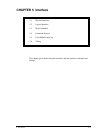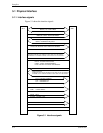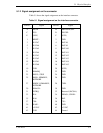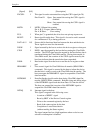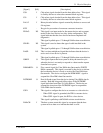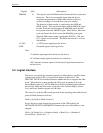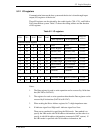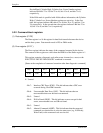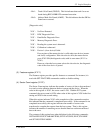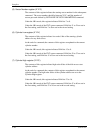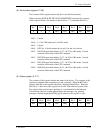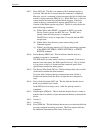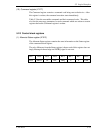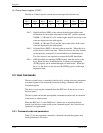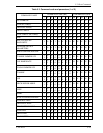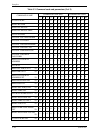
5.2 Logical Interface
C141-E221 5-9
- Bit 1: Track 0 Not Found (TK0NF). This bit indicates that track 0 was not
found during RECALIBRATE command execution.
- Bit 0: Address Mark Not Found (AMNF). This bit indicates that the SB Not
Found error occurred.
[Diagnostic code]
X’01’: No Error Detected.
X’02’: HDC Diagnostic Error
X’03’: Data Buffer Diagnostic Error.
X’04’: Memory Diagnostic Error.
X’05’: Reading the system area is abnormal.
X’06’: Calibration is abnormal.
X’80’: Device 1 (slave device) Failed.
Error register of the master device is valid under two devices (master
and slave) configuration. If the slave device fails, the master device
posts X’80’ OR (the diagnostic code) with its own status (X’01’ to
X’06’).
However, when the host system selects the slave device, the diagnostic
code of the slave device is posted.
(3) Features register (X’1F1’)
The Features register provides specific feature to a command. For instance, it is
used with SET FEATURES command to enable or disable caching.
(4) Sector Count register (X’1F2’)
The Sector Count register indicates the number of sectors of data to be transferred
in a read or write operation between the host system and the device. When the
value in this register is X’00’, the sector count is 256. With the EXT system
command, the sector count is 65536 when value of this register is X'00' in the first
setting and X'00' in the second setting.
When this register indicates X’00’ at the completion of the command execution,
this indicates that the command is completed successfully. If the command is not
completed successfully, this register indicates the number of sectors to be
transferred to complete the request from the host system. That is, this register
indicates the number of remaining sectors that the data has not been transferred
due to the error.
The contents of this register have other definition for the following commands;
INITIALIZE DEVICE PARAMETERS, SET FEATURES, IDLE, STANDBY
and SET MULTIPLE MODE.



